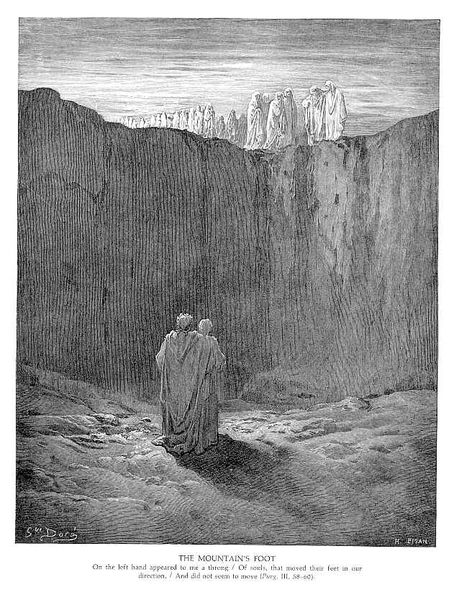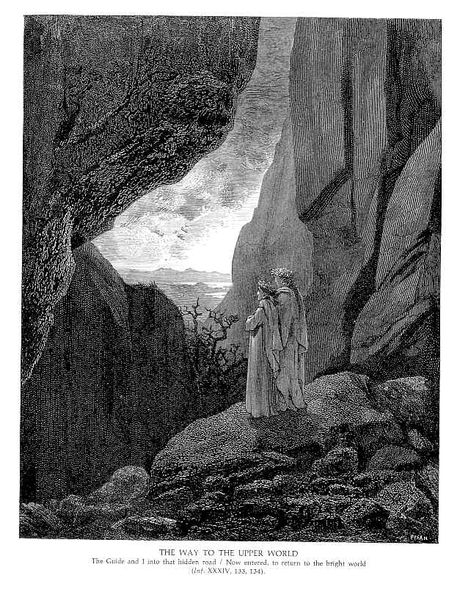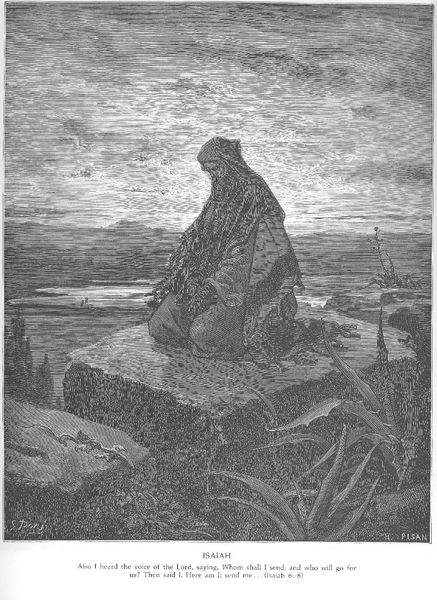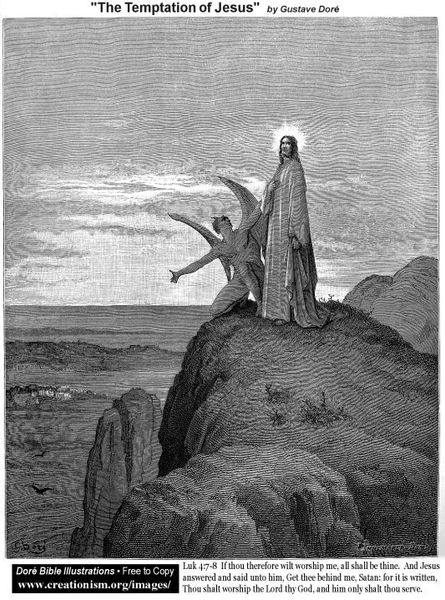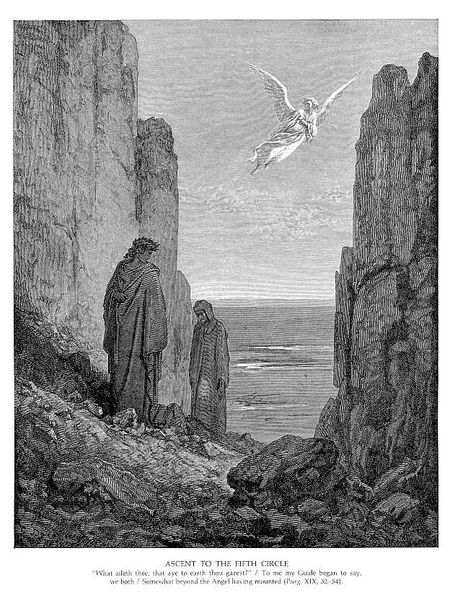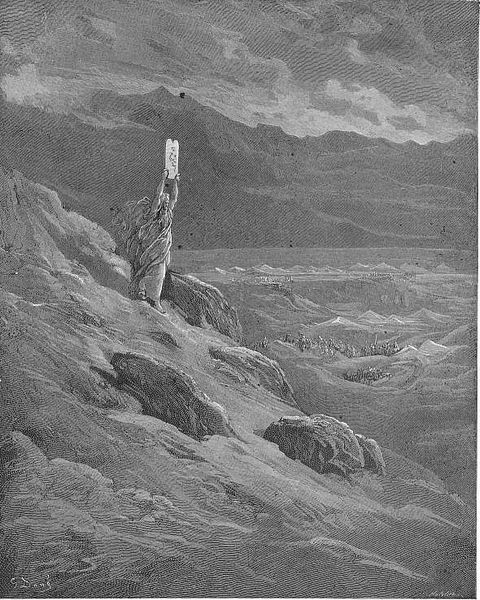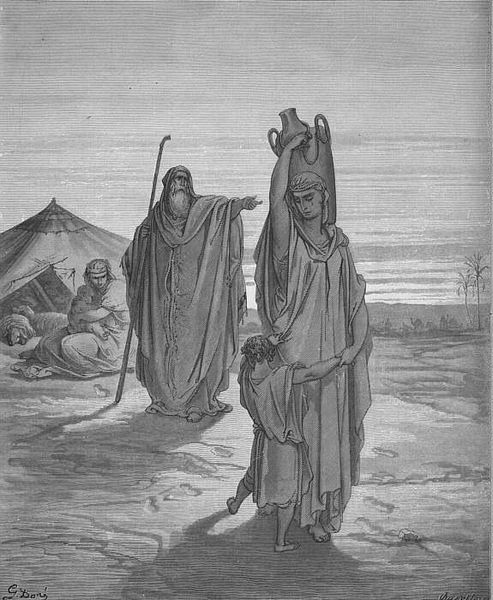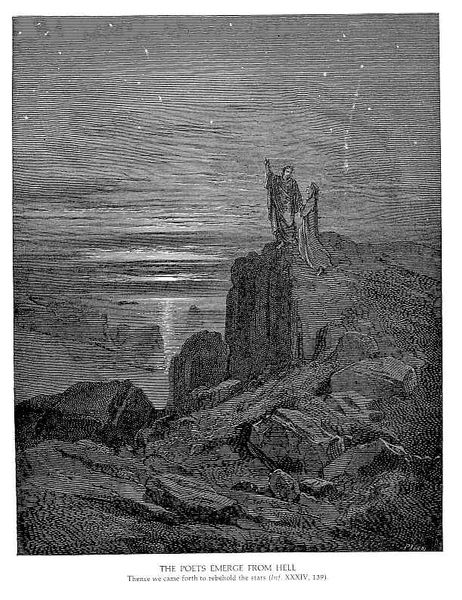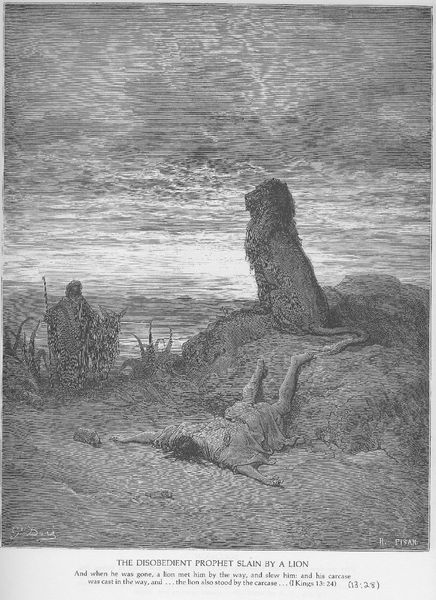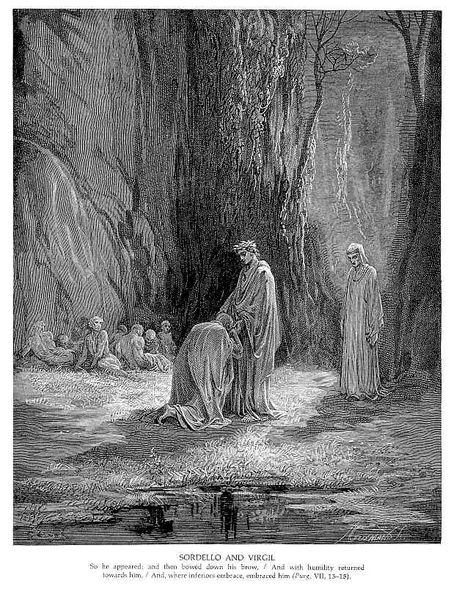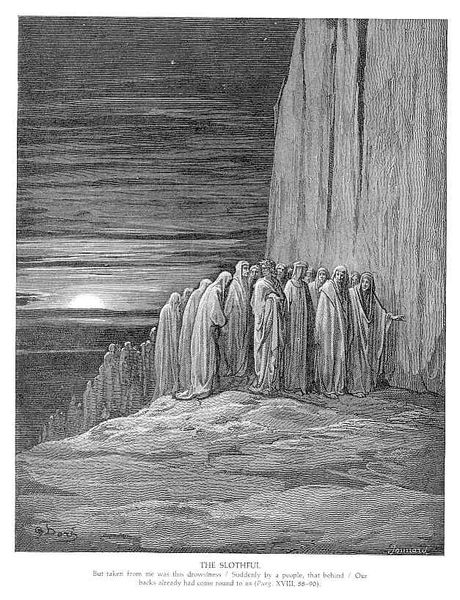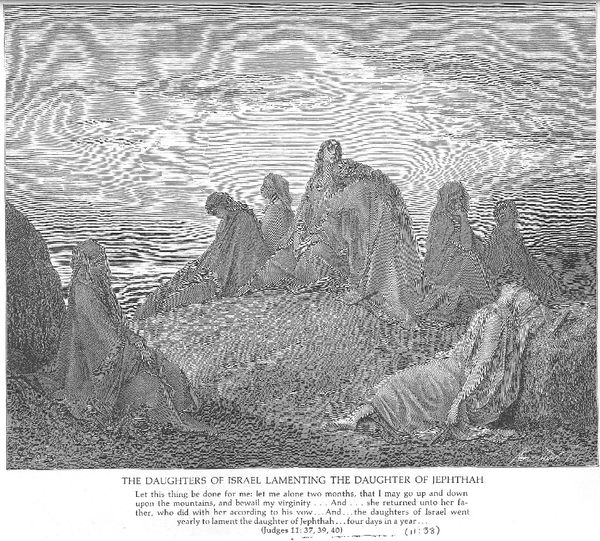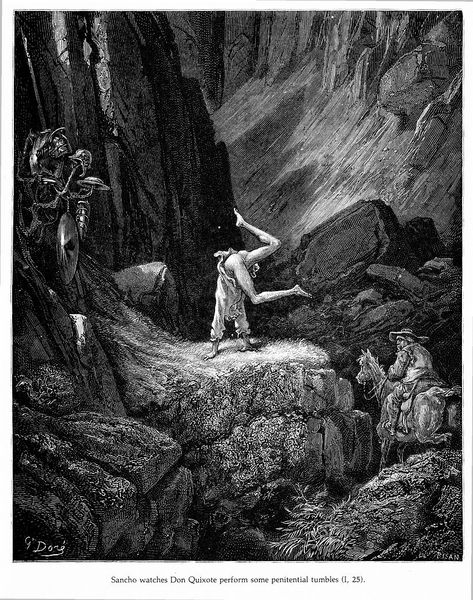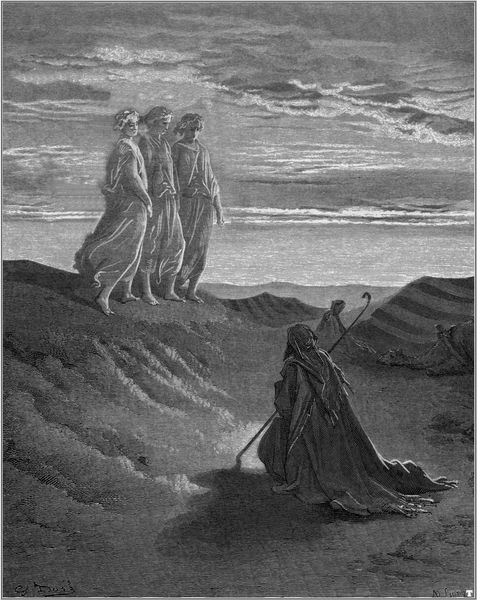
drawing, print, photography, engraving
#
drawing
# print
#
landscape
#
figuration
#
charcoal art
#
photography
#
black and white theme
#
romanticism
#
history-painting
#
engraving
Copyright: Public domain
Curator: The stark beauty of this print immediately strikes me. There’s a stillness to it, a sense of quiet contemplation. Editor: Indeed. What you're observing is "Twilight," an engraving crafted by Gustave Doré. Though undated, Doré was active in the mid to late 19th century, and much of his work reflects Romantic sensibilities. What social dynamics might be in play within this particular composition, would you say? Curator: It's interesting you ask about the social dynamics, because that's not what I immediately latch onto. Instead, my attention is drawn to the two figures seated on what appears to be a precipice, the ocean below them reflecting a sliver of the moon. There's an echo here of romanticism's fixation with the sublime power of nature and humanity's relationship with it, no? It feels like they’re dwarfed by the landscape, almost irrelevant in comparison to the grand spectacle of the twilight sky and the ocean. But maybe I read that contrast into their arrangement. Editor: It certainly could indicate what the artist’s beliefs were toward humans. However, if we bring an intersectional lens, what appears "dwarfed" could also symbolize marginalized positions within societal structures, placed against an indifferent backdrop. What symbolic value can we take away from that sky? Are there commonalities found throughout historical art regarding stars? Curator: Stars traditionally represent guidance, hope, divinity... The moon, too, speaks to cycles, the ebb and flow of time and transformation. Here, they seem distant, untouchable, highlighting perhaps a sense of longing or unattainable aspirations. And given that this is a print—a medium of reproduction—we need to consider how its accessibility impacted the reception of its themes, disseminating these ideas of Romanticism. Editor: Yes, dissemination through accessible media played a significant role. What the figures gaze upon seems also linked to visual systems used across cultures to convey beliefs. What visual symbols persist from one to another and how do we re-appropriate these symbols in an intersectional way? Considering historical erasures and social biases, how does a piece like “Twilight” engage in these debates? Curator: The print does highlight the way nature surpasses cultural biases by not engaging in biased thought. The scale shows indifference as an inherent property, but with beauty. Doré's technical skill in creating a scene brimming with complexity and symbolism shows a lot about his own identity and vision of an almost uncaring, but also welcoming environment for humanity to participate within. Editor: Well said. It truly seems like even amidst what one might expect as chaos, one may find familiarity with its structure if one pays close enough attention. Thank you for highlighting these crucial issues present within Dore's work, through symbols, figures, and our ever changing, romantic relationship with them all.
Comments
No comments
Be the first to comment and join the conversation on the ultimate creative platform.
